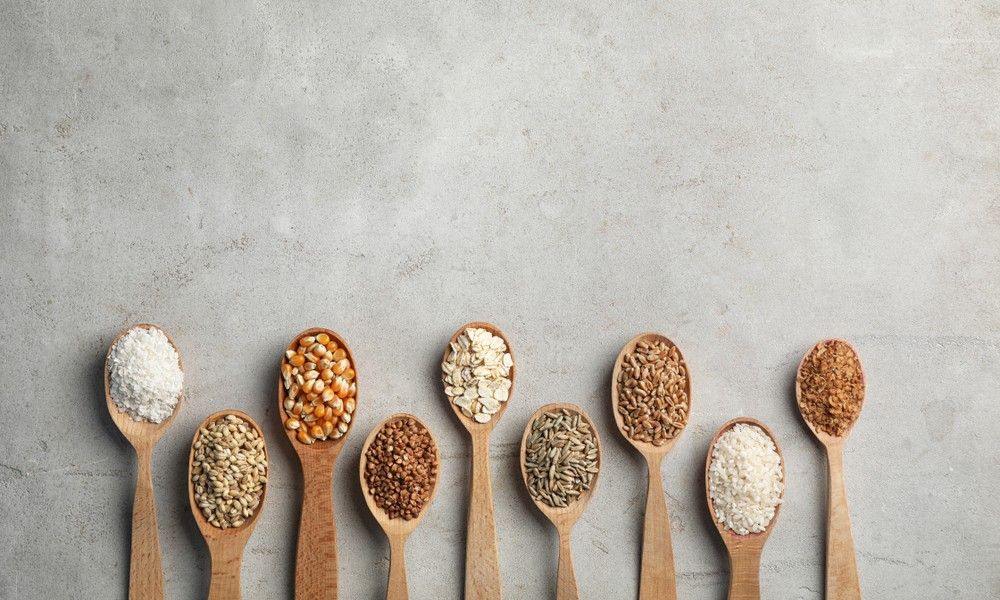
Whether it is the enticing smell of the yummy deep-fried pakoras or those mouth-watering burgers being served at a local fast food vendor, we are always bombarded with the temptations to have fast food. Though they taste yummy and satiate your huger, we all know but ignore the negative consequences they have on our health.
Whenever confronted with the idea of healthy eating, many people use the occasion to ‘swear’ that they’ll start consciously healthy eating the next day. To put it bluntly, it isn’t that simple.
To start with, you need to first ensure you buy the right food.
This means buying food that actually contains various types of whole grains. You might find food labelled as ‘multigrain’, ‘stone ground’ or ‘organic’ but this does not mean it is healthy. Instead, you need to check the ingredient list to find if the product contains whole wheat, whole oats or any grain that has to be the main ingredient of that product. Sometimes, some products contain a mix of healthy whole-grains and processed grains. You need to know the difference between the two to go forward.
What constitutes ‘Whole grains’?
As far as nutrition is concerned, there is a stark difference between healthy and unhealthy grains. Healthy or ‘whole’ grains contain the entire grain kernel-the bran, germ and endosperm. This includes grains like whole-wheat flour, bajra, brown rice and cracked wheat. Each part of the grain kernel has its own nutritional values-
Whole grains can be cracked, rolled or crushed. As long as these three parts are present- it’s considered healthy. On the other hand, refined grains have only the endosperm, with the bran and germ removed. Though some of these refined grains have various minerals and vitamins added back. They still aren’t that healthy as whole grains.
There are products made with whole grains, like certain types of pasta, breads and breakfast cereals. You need to check the ingredient lists to ensure these products aren’t a mix of refined and whole grains or are sugar-loaded(read-some ready-to-eat cereals).
Ideal Amount of Whole Grains in Your Diet
The actual amount of whole grains that should be in your diet depends on your age, sex and level of physical activity you do. Growing children and young adults are advised to have more whole grains while the elderly need a certain amount of whole grains to remain healthy.
How to Shift to Healthy Eating
You can start with using organic and whole grain breakfast cereals like organic wheat flakes, corn flakes or oats flakes. Fried, greasy and sticky snack foods can be substituted with popcorn (yes, it is quite healthy as it is contains the whole corn grain) ,granola bars or other healthy snacks recommended by experts.
To make your transition to a healthy diet easier, you can substitute processed grains with best whole grains like Amaranth Grain, Ragi Whole Grain, whole Wheat Grain and other healthy grains to popular fast food items like Sandwiches’, pastries, cake and a whole lot of foods to start with. To complete your healthy diet, you must ensure you substitute sugar-loaded soft drinks with natural juices, have raw fruits and veggies in salads and not have fried items. Many of us are so used to having unhealthy food that we do not even care of the consequences that could arise due to our regular consumption of fast food. The change made in this regard is challenging to say the least, but can be done with the help of a solid willpower.
Benefits of Whole Grains:Whole grains, as opposed to processed grains or flour, contain many more heathy nutrients that can save you from deadly diseases like hypertension, diabetes, high blood pressure and the like. Also, due to their high fiber content, you can digest your food more efficiently, besides also helping you shed those extra kilos.
What’s more, various types of whole grains also help you fight inflammation. Studies have also shown how whole grains help reduce the risk of developing cancer. In fact, the fiber of the grain is known to take up the role as a prebiotic, lowering the risk of cancer.
Summing it up…
We are living in a time where unhealthy food is easily and cheaply available. If you care for your health, you need to gradually shift to whole grain foods as a staple along with other organic fruits, vegetables and other ingredients. Though this is easily said than done, dietary changes taken now can be extremely beneficial to you in the long run.
The 10 Most Replaced Kitchen Essentials by Health-Focused Consumers in 2025
December 24th, 202510 Must-Try Eco-Friendly Products to Replace Plastic at Home
December 17th, 2025Best Diet for PCOS and PCOD to Manage Weight, Periods, and Hormones
December 15th, 2025